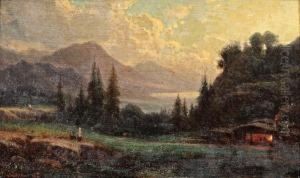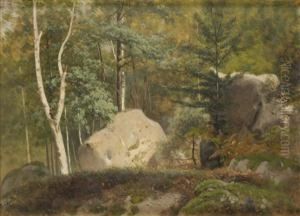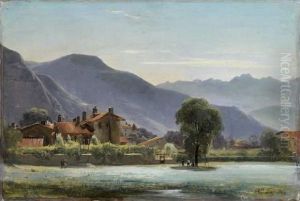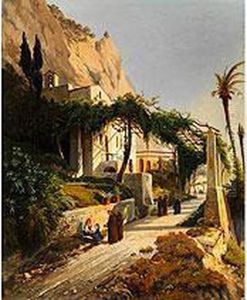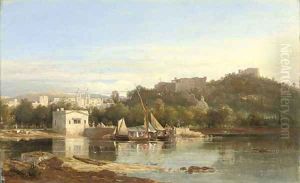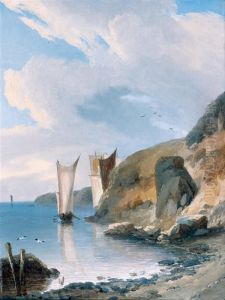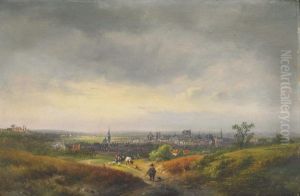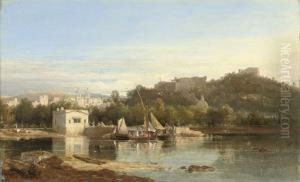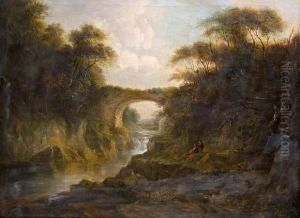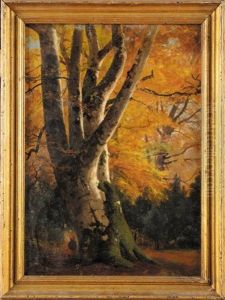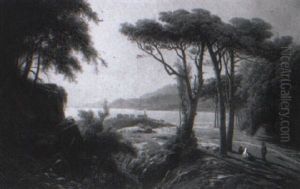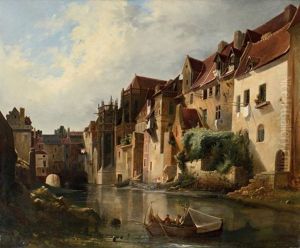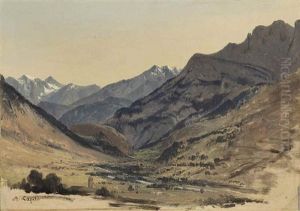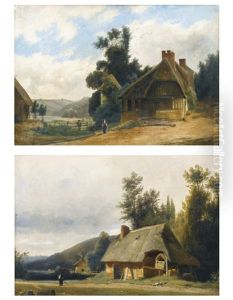Louis Auguste Lapito Paintings
Louis Auguste Lapito was a French painter born on May 15, 1803, in Versailles, France. He was known primarily for his landscape paintings and his involvement in the Barbizon School, a movement that focused on realism in art and depicted natural landscapes with a sense of emotion and natural beauty. Lapito was trained in the neoclassical tradition, which was prevalent during his time, but he gradually shifted towards landscape painting, influenced by the changing artistic movements of the 19th century.
In his early career, Lapito studied under neoclassical artists such as Jean-Victor Bertin and landscape painter Xavier Le Prince. He debuted at the Paris Salon in 1824, where he continued to exhibit regularly throughout his life, gaining recognition for his works. His paintings often depicted scenes from the French coast and countryside, capturing the changing effects of light and atmosphere with a sensitivity that presaged Impressionism.
Lapito traveled extensively throughout France, particularly along the coasts of Normandy and Brittany, where the rugged landscapes and dramatic coastal scenery provided ample inspiration for his work. His travels also took him to Italy, where he was influenced by the Italian landscape tradition. The artist's approach to painting emphasized the study of nature directly from life, a practice that became a hallmark of the Barbizon School, with which he became associated.
Despite his association with the Barbizon School, Lapito maintained a unique style that combined elements of Romanticism with a keen observation of nature, distinguishing him from his contemporaries. He was skilled in capturing the transient effects of light on water and had a particular talent for rendering the atmosphere and mood of maritime scenes, which became a significant aspect of his oeuvre.
Louis Auguste Lapito's work was appreciated during his lifetime, and he received several awards, including medals at the Salon. He was also made a Knight of the Legion of Honor in 1846, which was a significant recognition of his artistic achievements. His legacy continued after his death on June 17, 1874, in Bois-le-Roi, as his works influenced the next generation of landscape painters, particularly those who were part of the burgeoning Impressionist movement. Today, Lapito's paintings can be found in various museums and private collections, where they continue to be celebrated for their contribution to the landscape genre of the 19th century.



